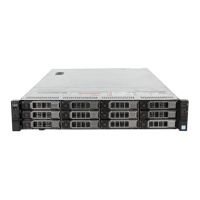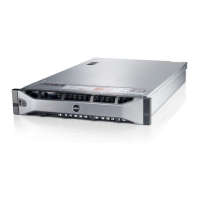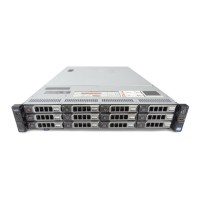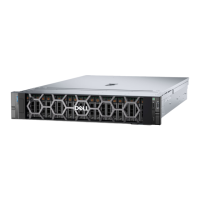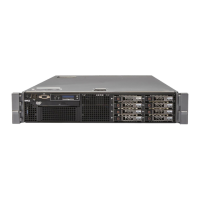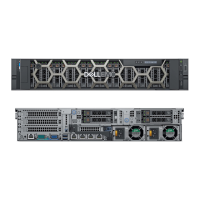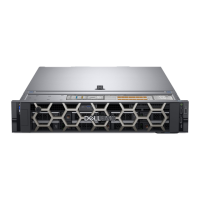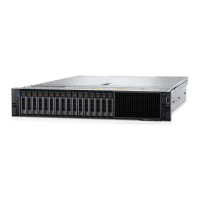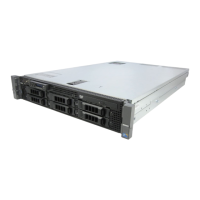Entering the system Service Tag by using System Setup
If Easy Restore fails to restore the Service Tag, use System Setup to enter the Service Tag.
1. Turn on the system.
2. Press F2 to enter System Setup.
3. Click Service Tag Settings.
4. Enter the Service Tag.
NOTE: You can enter the Service Tag only when the Service Tag field is empty. Ensure that you
enter the correct Service Tag. After the Service Tag is entered, it cannot be updated or changed.
5. Click Ok.
6. Import your new or existing iDRAC Enterprise license.
For more information, see the Integrated Dell Remote Access Controller User's Guide at Dell.com/
idracmanuals.
Restoring the Service Tag by using the Easy Restore feature
The Easy Restore feature enables you to restore your system’s Service Tag, license, UEFI configuration,
and the system configuration data after replacing the system board. All data is automatically backed up in
a backup flash device. If BIOS detects a new system board and the Service Tag in the backup flash device,
BIOS prompts the user to restore the backup information.
1. Turn on the system.
If BIOS detects a new system board, and if the Service Tag is present in the backup flash device, BIOS
displays the Service Tag, the status of the license, and the UEFI Diagnostics version.
2. Perform one of the following steps:
• Press Y to restore the Service Tag, license, and diagnostics information.
• Press N to navigate to the Dell Lifecycle Controller based restore options.
• Press F10 to restore data from a previously created Hardware Server Profile.
After the restore process is complete, BIOS prompts to restore the system configuration data.
3. Perform one of the following steps:
• Press Y to restore the system configuration data.
• Press N to use the default configuration settings.
After the restore process is complete, the system restarts.
Trusted Platform Module
Trusted Platform Module (TPM) is a dedicated microprocessor designed to secure hardware by
integrating cryptographic keys into devices. A software can use a Trusted Platform Module to
authenticate hardware devices. As each TPM chip has a unique and secret RSA key burned in as it is
produced, it can perform the platform authentication.
CAUTION: Do not attempt to remove the Trusted Platform Module (TPM) from the system board.
After the TPM is installed, it is cryptographically bound to that specific system board. Any attempt
to remove an installed TPM breaks the cryptographic binding, and it cannot be re-installed or
installed on another system board.
NOTE: This is a Field Replaceable Unit (FRU). Removal and installation procedures must be
performed only by Dell certified service technicians.
174
